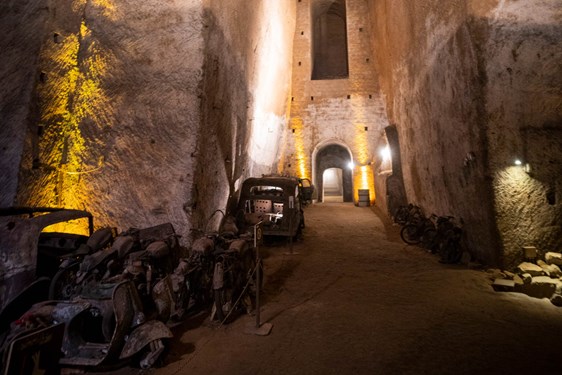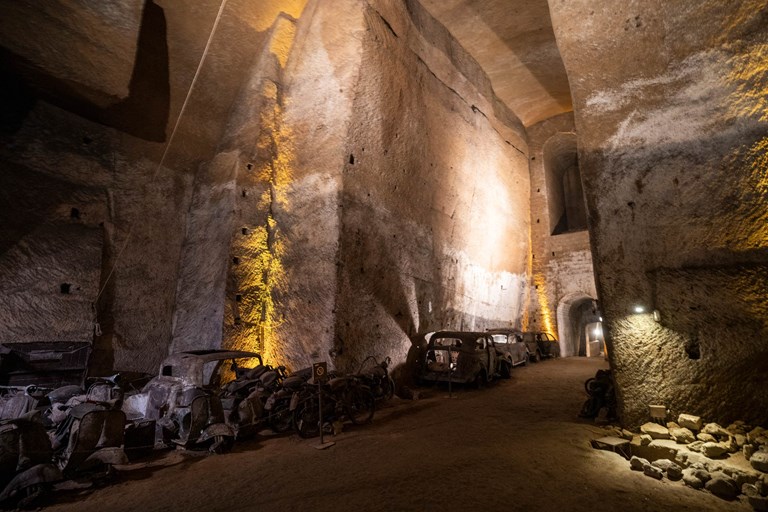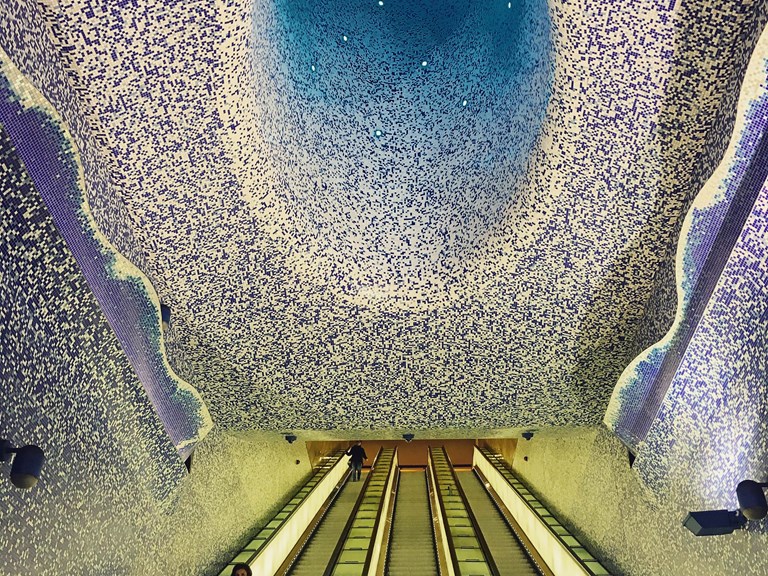NAPLES: THE BOURBON TUNNELS
19.04.2021 NAPLES & AROUND
All of a sudden, a strange sight looms up in front of us: a cohort of Vespas, rusting away but still mostly upright. I wonder if, in two thousand years’ time, a visitor coming this same way will look at these ghostly scooters the way we look at the ceremonial chariot that was recently unearthed in Pompeii.
I’m in the Galleria Borbonica, an extraordinary cutting that slices through the underbelly of Naples. Though it looks like it could date back to the very earliest years of ‘Neapolis’, founded by Greek settlers in the 7th century BC, this underground passageway was created only in the middle of the 19th century. It was ordered by the city’s Bourbon rulers following the Europe-wide popular revolts of 1848, both as an escape route and as a way of deploying soldiers quickly in the event or riots and insurrections.
Begun in April 1853, work on a Galleria that was designed to connect the Royal Palace with military barracks half a mile away went on for three years. The excavation was all done by hand, using pickaxes and chisels whose marks can still be made out on the walls. Among the many technical issues that engineer Errico Alvino had to overcome was the presence of ancient aqueducts and water cisterns along the route. It was probably lack of funds that put paid to the project, and the 431-metre tunnel never did quite reach Palazzo Reale, falling around a hundred metres short.
In 1859, three years after the project was abandoned, King Ferdinand II died. The Bourbon dynasty lasted only two more years: in 1861, harried by Garibaldi and his Redshirts, Ferdinand’s successor Francis II abdicated and the ‘Reign of the Two Sicilies’ was united with the rest of Italy.

View
The tunnel to nowhere then began a strange afterlife, forgotten by many Neapolitans until the Second World War, when parts were used as air raid shelters – these can still be seen, and were relatively well organized, with latrines and an infirmary. A child was even born here one night in 1943 – though christened Anna, the other denizens of the shelter nicknamed her Sirena – which can mean both ‘mermaid’ and ‘air-raid siren’. Later, another section, accessible via a ramp from the street, became an underground storeroom for unclaimed goods buried during wartime bombing raids or seized during evictions – hence the Vespas. There are also some wartime jeeps down here and, perched on a mound of rubble, a penny-farthing bicycle.
It was only in 2005 that volunteers from a local history association began to clear tons of rubble and detritus from the underground passages. Five years later, the Galleria Borbonica opened to the public for guided tours. In addition to the standard visit, three other special tours are available: the Via delle Memorie, which takes in an underground cistern, a hard-hat Adventure Tour, and another hard-hat route, the Speleo Tour Light, which leads through the narrow tunnels once used by the pozzari, men whose job it was to clean out Naples’ ancient underground water cisterns and aqueducts.
Photos © Roberto Salomone
Le Sirenuse Newsletter
Stay up to date
Sign up to our newsletter for regular updates on Amalfi Coast stories, events, recipes and glorious sunsets


